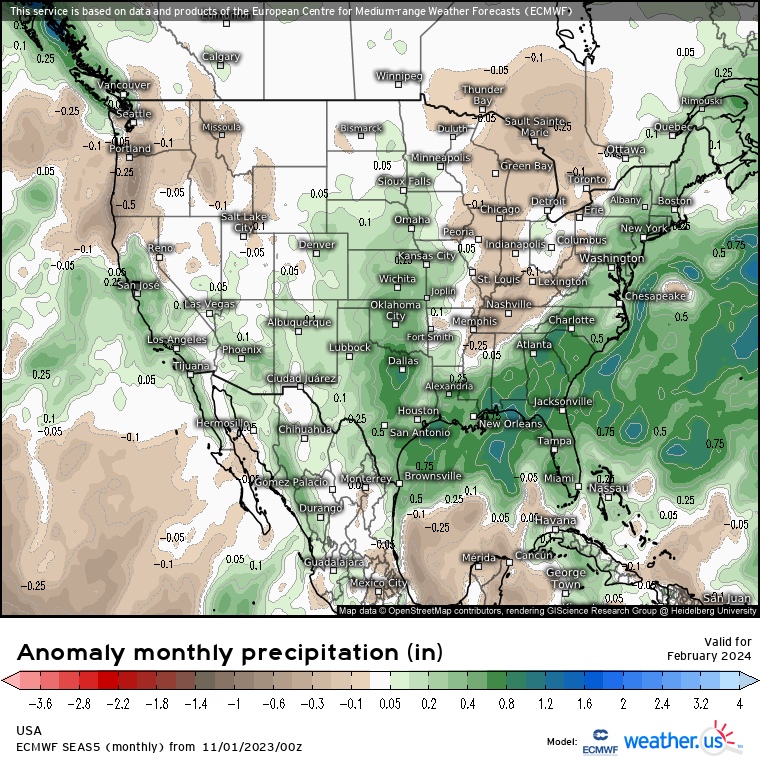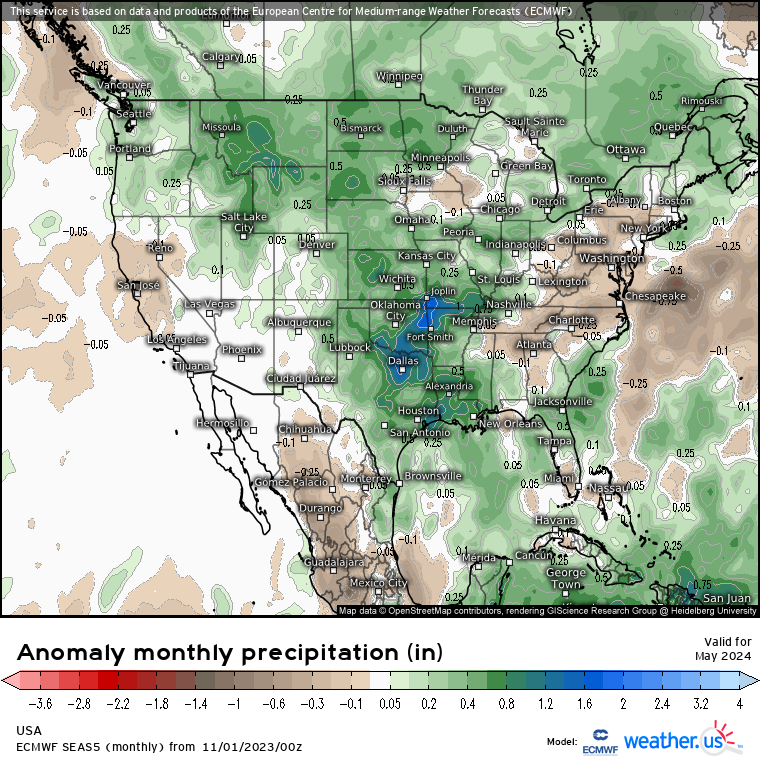Planning & Adaptation Key in 2024
by Kaylee Hendricks
 Weather plays a pivotal role in agriculture and can profoundly impact crop production worldwide. Farmers and agricultural communities rely on predictable weather patterns to plan planting and harvesting schedules, optimize irrigation, and make various crop management decisions. Unforeseen or extreme weather events can disrupt these plans and lead to reduced crop yields, economic losses, and even food and fiber shortages.
Weather plays a pivotal role in agriculture and can profoundly impact crop production worldwide. Farmers and agricultural communities rely on predictable weather patterns to plan planting and harvesting schedules, optimize irrigation, and make various crop management decisions. Unforeseen or extreme weather events can disrupt these plans and lead to reduced crop yields, economic losses, and even food and fiber shortages.
As we all know, mother nature has not been kind to the industry. The 2023 weather patterns brought more regular and advantageous moisture levels for agriculture to the north, while the drier and hotter environment in the south presented more significant difficulties.
Planning for the Future
In the next few months, those in the Texas, Oklahoma, and Kansas areas may anticipate some chilly and rainy weather patterns. According to Brian Bledsoe, Chief Meteorologist for KKTV in Colorado Springs, Colorado, and for BrianBledsoe WX, LLC, computer modeling indicates that there may be an active storm trend in the western United States. This pattern would lead to increasing storm activity that intensifies further east.
“We may have a colder than average winter and a wetter than average winter. Suppose we shove that moisture into the ground during the winter months that’s going to make the drying out process take longer,” Bledsoe explained. “The reason for that is whenever you have good subsoil moisture, it usually will delay the onset of drought because you have to bake all that moisture out of the ground. That moisture goes into the atmosphere. It develops clouds with shower storms.”
Moisture isn’t necessarily a cause for concern in light of the wetter winter anticipated going into 2024. The current El Niño phenomenon in the Pacific Ocean will help keep things relatively active through at least the first half of 2024.
“We need to be very cautious about putting all our eggs in the El Niño basket and that it will fix everything. Rarely does that ever happen, and rarely does it ever have the staying power that we would like,” Bledsoe said. “I am optimistic about the first half of the year, and even the later part of this year, doing fairly well for us. I just think we need to be very mindful that living in the plains, we are never very far away from drought.”
The second half of 2024 might revert to a La Niña episode, which we have dealt with intermittently for the past three years.
“I would say we are going to have a much more balanced year on the front end in terms of moisture, but you have to stay plugged into what you’re doing here regarding this forecast going forward,” Bledsoe said.
 Staying Plugged In
Staying Plugged In
Weather patterns can change rapidly. Bledsoe emphasizes the need to continually check weather updates and not rely solely on long-range forecasts.
“We need to be very aware that how we start 2024 may not be how we finish the year. I understand that fact is often hard for some people to wrap their minds around. It’s like we’ve got all this moisture; everything ’s great,” Bledsoe said. “We have to be prepared for the backside of that because history has shown it does not take very long for us to go back into dryness even after we have had some good moisture. We need to be very informed about how we use that moisture, the decisions we make around that moisture, and then also be mindful of what could show up with a drier pattern, late 2024.”
Any farmer will benefit from maintaining a connection to a reliable weather source to stay plugged in during 2024. It is critical to monitor weather updates, particularly in areas where weather patterns are prone to shifting quickly, like the High Plains of Texas.
“If you look at a forecast and then don’t check back for a few weeks or a couple of months and say, well, that changed,” Bledsoe said. “That’s the thing, weather changes, and in terms of long-range forecast, there are a lot of moving parts.”


